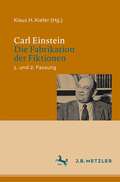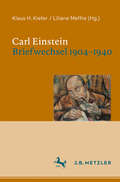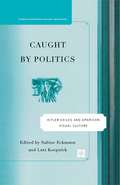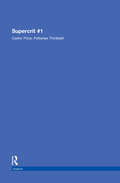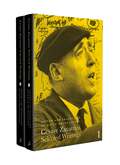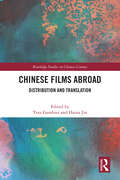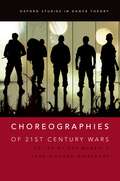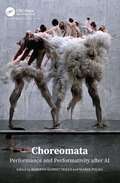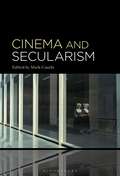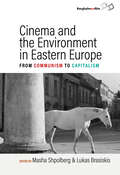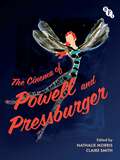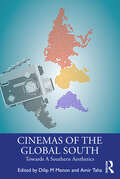- Table View
- List View
Carl Einstein: 1. und 2. Fassung
Die neue Edition von Carl Einsteins unveröffentlichtem Werk Die Fabrikation der Fiktionen bringt die beiden erhaltenen Fassungen und eröffnet mit Nachwort und ausführlichem Register eine neue, kritische Sicht auf die klassisch gewordene Moderne. In der Wirtschaftskrise der 30er Jahre verschärft Einstein (1885‒1940) die Kunst- und Gesellschaftskritik, die seine Schriften schon immer geprägt hatte, erneut. Seine Werke wie Bebuquin (1906‒1912), Negerplastik (1915), Die Kunst des 20. Jahrhunderts (1926, 1928, 1931) hatten Epoche gemacht. Nun aber widerruft er in der Fabrikation der Fiktionen das eigene Schaffen, ja, er attackiert, ohne Namen zu nennen, vor kurzem noch bewunderte Künstler, wie Picasso, auch befreundete Kollegen, wie Gottfried Benn, vor allem aber die Surrealisten um André Breton. Er entlarvt die Analogie von Imagination und Spekulation in Poesie und Kapitalismus. Die Moderne erscheint ihm als missratene Primitive. Die Fabrikation der Fiktionen bietet nicht nur Kritik und Satire, sie enthält auch markante Insider-Kommentare zur Avantgarde in Kunst und Literatur. Angesichts der Machtergreifung Hitlers ruft Einstein Arbeiter und Intellektuelle zum revolutionären Handeln auf. Sein tragisches Lebensende verhindert die Veröffentlichung.
Carl Einstein. Briefwechsel 1904–1940
Carl Einstein (1885‒1940) war einer der bedeutendsten Schriftsteller, Kunstkritiker und Theoretiker der Avantgarde des 20. Jahrhunderts. Er war auch ein Mann der Tat, kämpfte in Berlin auf Seiten von Spartakus und in der Kolonne Durruti in Spanien gegen Reaktion und Faschismus. In seiner Korrespondenz spiegeln sich alle Strömungen und Konflikte, die Literatur, Kunst und Politik Europas bewegten. Er wechselte Briefe mit bekannten Größen der Kunstgeschichte wie etwa Picasso und Paul Klee. Daniel-Henry Kahnweiler, der Pariser Kunsthändler, wurde sein Freund. Für seine legendäre Zeitschrift „Documents“ korrespondierte er mit Gelehrten aus aller Welt. In Einsteins Briefen erfährt man auch von vielen Projekten, die er nicht vollenden konnte. Von seiner weitaus bedeutenderen Korrespondenz haben sich 425 Texte, einschließlich offener Briefe oder auch briefartiger Widmungen, erhalten. Sie werden chronologisch geordnet, detailliert kommentiert und mittels eines Personen-, Werk- und Zeitschriftenregisters erschlossen. Französische Briefe werden übersetzt. Carl Einsteins Briefwechsel stellt für literatur- und kunst-, aber auch für sozialgeschichtliche Forschungen zum 20. Jahrhundert reichhaltiges Material zur Verfügung.
Cases on Arts Entrepreneurship (Elgar Cases in Entrepreneurship)
How can entrepreneurial thinking be applied to ventures in the arts? What strategies can artists employ to build viable professional careers? How can sustainable and thriving arts organizations be created? Merging the worlds of business and the arts, this engaging book of case studies of individuals and organizations, written by experts spanning a broad range of fields within the arts, offers insight into answering these key questions.Bringing together nuanced details from across the arts to provide a broad understanding of arts entrepreneurship, it also gives readers the tools to apply insights from other artistic disciplines to their own, synthesizing unique, targeted strategies from a myriad of sources. Each chapter includes:engaging classroom activities and discussion ideasteaching notes that allow material to be easily incorporated into any courseextraction of important principles of arts entrepreneurship from each case study. Equally applicable to formal and individual study, this book will prove an invaluable and inimitable resource for not only educators, researchers and scholars in arts entrepreneurship, management or administration but also individuals pursuing careers in this highly competitive industry.
Caught By Politics: Hitler Exiles and American Visual Culture (Studies in European Culture and History)
This book explores German and European exile visual artists, designers and film practitioners in the United States such as Max Beckmann, George Grosz, Hans Richter, Peter Lorre, and Edgar Ulmer and examines how American artists including Walter Quirt, Jackson Pollock, and Robert Motherwell responded to the Europeanization of American culture.
Cedric Price: SuperCrit #1
The Supercrit series revisits some of the most influential architectural projects of the recent past and examines their impact on the way we think and design today. Based on live studio debates between protagonists and critics, the books describe, explore and criticise these major projects. This first book in the unprecedented series examines Cedric Price’s groundbreaking Potteries Thinkbelt project from the 1960s, an innovative high-tech educational facility in the North Staffordshire Potteries. Highly illustrated and with contemporary criticism, this is a book not to be missed!In Cedric Price: Potteries Thinkbelt you can hear the architect’s project definition, see the drawings and join in the crit. This innovative and compelling book is an invaluable resource for any architecture student.
Cedric Price: SuperCrit #1
The Supercrit series revisits some of the most influential architectural projects of the recent past and examines their impact on the way we think and design today. Based on live studio debates between protagonists and critics, the books describe, explore and criticise these major projects. This first book in the unprecedented series examines Cedric Price’s groundbreaking Potteries Thinkbelt project from the 1960s, an innovative high-tech educational facility in the North Staffordshire Potteries. Highly illustrated and with contemporary criticism, this is a book not to be missed!In Cedric Price: Potteries Thinkbelt you can hear the architect’s project definition, see the drawings and join in the crit. This innovative and compelling book is an invaluable resource for any architecture student.
Cesare Zavattini: Selected Writings
Cesare Zavattini: Selected Writings offers, for the first time in English, a substantive selection of the Italian screenwriter's writings across two volumes. Through translation and detailed cultural and contextual commentary, translator and editor David Brancaleone traces not only Zavattini's theory of the screen, but also his experimentation in new film practices, including the flash-film (film lampo), the inquiry film (film inchiesta), cinema as encounter (cinema d'incontro), the diary film (film diario), the confessional film (film-confessione), and the grass-roots community film (cinema insieme or cinema di tanti per tanti).
Charles Macklin and the Theatres of London (Eighteenth-Century Worlds #11)
Charles Macklin (1699?–1797) was one of the most important figures in the eighteenth-century theatre. Born in Ireland, he began acting in London in around 1725 and gave his final performance in 1789 – no other actor can claim to have acted across seven decades of the century, from the reign of George I to the Regency Crisis of 1788. He is credited alongside Garrick with the development of the natural school of acting and gave a famous performance of Shylock that gave George II nightmares. As a dramatist, he wrote one of the great comic pieces of the mid-century (Love à la Mode, 1759), as well as the only play of the century to be twice refused a performance licence (The Man of the World, 1781). He opened an experimental coffeehouse in Covent Garden, he advocated energetically for actors’ rights and copyright reform for dramatists, and he successfully sued theatre rioters. In short, he had an astonishingly varied career. With essays by leading experts on eighteenth-century culture, this volume provides a sustained critical examination of his career, illuminating many aspects of eighteenth-century theatrical culture and of the European Enlightenment, and explores the scholarly benefit – and thrill – of restaging Macklin’s work in the twenty-first century.
The Chinese Cinema Book
This revised and updated new edition provides a comprehensive introduction to the history of cinema in mainland China, Hong Kong and Taiwan, as well as to disaporic and transnational Chinese film-making, from the beginnings of cinema to the present day. Chapters by leading international scholars are grouped in thematic sections addressing key historical periods, film movements, genres, stars and auteurs, and the industrial and technological contexts of cinema in Greater China.
Chinese Films Abroad: Distribution and Translation (Routledge Studies in Chinese Cinema)
This book examines Chinese films made and shown abroad roughly between the 1920s and the 2020s, from the beginning of the international exchange of the Chinese national film industry to the emergence of the concept of soft power.The periodisation of Chinese cinema(s) does not necessarily match the political periods: on the one hand, the technical development of the film industry and the organisation of translation in China, and on the other hand, official relations with China and translation policies abroad impose different constraints on the circulation of Chinese films. This volume deals with the distribution and translation of films from mainland China, Taiwan, Hong Kong, and the Chinese diaspora. To this end, the contributors address various issues related to the circulation and distribution of Chinese films, including co- productions, agents of exchange, and modes of translation. The approach is a mixture of socio- cultural and translational methods. The data collected provides, for the first time, a quantitative overview of the circulation of Chinese films in a dozen foreign countries.The book will greatly interest scholars and students of Chinese cinema, translation studies, and China studies.
Choreographies of 21st Century Wars (Oxford Studies in Dance Theory)
Wars in this century are radically different from the major conflicts of the 20th century--more amorphous, asymmetrical, globally connected, and unending. Choreographies of 21st Century Wars is the first book to analyze the interface between choreography and wars in this century, a pertinent inquiry since choreography has long been linked to war and military training. The book draws on recent political theory that posits shifts in the kinds of wars occurring since the First and Second World Wars and the Cold War, all of which were wars between major world powers. Given the dominance of today's more indeterminate, asymmetrical, less decisive wars, we ask if choreography, as an organizing structure and knowledge system, might not also need revision in order to reflect on, and intercede in, a globalized world of continuous warfare. In an introduction and sixteen chapters, authors from a number of disciplines investigate how choreography and war in this century impinge on each other. Choreographers write of how they have related to contemporary war in specific works, while other contributors investigate the interconnections between war and choreography through theatrical works, dances, military rituals and drills, the choreography of video war games and television shows. Issues investigated include torture and terror, the status of war refugees, concerns surrounding fighting and peacekeeping soldiers, national identity tied to military training, and more. The anthology is of interest to scholars in dance, performance, theater, and cultural studies, as well as the social sciences.
Choreomata: Performance and Performativity after AI
Is artificial intelligence (AI) becoming more and more expressive, or is human thought adopting more and more structures from computation? What does it mean to perform oneself through AI, or to construct one’s subjectivity through AI? How does AI continue to complicate what it means to have a body? Has the golden age of AI, especially with regards to creative applications, already ended? Choreomata: Performance and Performativity after AI is a book about performance and performativity, but more specifically, it is a book about the performance of artificiality and the performance of intelligence. Both humans and human-designed computational forces are thoroughly engaged in an entangled, mutual performance of AI. Choreomata spins up a latticework of interdisciplinary thought, pairing theoretical inquiry from philosophy, information theory, and computer science with practical case studies from visual art, dance, music, and social theory. Through cross-disciplinary proportions and a diverse roster of contributors, this book contains insights for computer scientists, social scientists, industry professionals, artists, and beyond.
Cinema and Secularism
Cinema and Secularism is the first collection to make the relationship between cinema and secularism thematic, utilizing a number of different methodological approaches to examine their identification and differentiation across film theory, film aesthetics, film history, and throughout global cinema.The emergence of moving images and the history of cinema historically coincide with the emergence of secularism as a concept and discourse. More than historically coinciding, however, cinema and secularism would seem to have-and many contemporary theorists and critics seem to assume-a more intrinsic, almost ontological connection to each other. While early film theorists and critics explicitly addressed questions about secularism, religion, and cinema, once the study of film was professionalized and secularized in the Western academy in both film studies and religious studies, explicit and critical attention to the relationship between cinema and secularism rapidly declined. Indeed, if one canvases film scholarship today, one will find barely any works dedicated to thinking critically about the relationship between cinema and secularism. Extending the recent “secular turn” in the humanities and social sciences, Cinema and Secularism provokes critical reflection on its titular concepts. Making contributions to theory, philosophy, criticism, and history, the chapters in this pioneering volume collectively interrogate the assumption that cinema is secular, how secularism is conceived and related to cinema differently in different film cultures, and whether the world is disenchanted or enchanted in cinema. Coming from intellectually diverse backgrounds in film studies, religious studies, and philosophy, the interdisciplinary contributors to this book cover films and traditions of thought from America, Europe, Africa, the Middle East, South Asia, and East Asia. In these ways, Cinema and Secularism opens new areas of inquiry in the study of film and contributes to the ongoing interrogation of secularism more broadly.
Cinema and the Environment in Eastern Europe: From Communism to Capitalism
The annexation of Eastern Europe to the Soviet sphere after World War II dramatically reshaped popular understandings of the natural environment. With an eco-critical approach, Cinema and the Environment in Eastern Europe breaks new ground in documenting how filmmakers increasingly saw cinema as a tool to critique the social and environmental damage of large-scale projects from socialist regimes and newly forming capitalist presences. New and established scholars with backgrounds across Europe, the United States, and Australia come together to reflect on how the cultural sphere has, and can still, play a role in redefining our relationship to nature.
Cinema in the Arab World: New Histories, New Approaches (World Cinema)
Cinema in the Arab world has been the subject of varied and rigorous studies, but most have focused on films as text, providing in-depth analyses of plot, style, ideologies, or examination of the biographies of prominent directors or actors.This innovative new volume shifts the focus on Arab cinema off-screen, to examine the histories, politics, and conditions of distribution, exhibition, and cinema-going in the Arab world. Through broadening the frame of study beyond the screen, the book widens understanding of the cinema, not merely as a collection of films-as-texts, but as a site of cultural and political contestation in the Arab world. Divided into two sections, and guided by interdisciplinary considerations, the contributors examine historical and contemporary issues of Arab cinema in terms of the experience of movie-going and filmmaking. They examine the networks of distribution and exhibition, as well as the contested and multiple meanings that the cinema embodied through diverse historical periods and geographical locations. Part I focuses on new histories of Arab cinema in terms of film production, distribution, exhibition and audience's experiences of cinema-going. Part II deals with more recent issues within scholarship on Arab cinema such as issues of politics, economics, ideologies, as well as issues related to Arab movies' international circulation and screenings at festivals. Together, the chapters enrich our understanding of the cinema in the Arab world, showing how deeply embedded it is within its social, political, and economic contexts.
The Cinema of Powell and Pressburger
Michael Powell and Emeric Pressburger were true visionaries of British cinema, creating glorious Technicolor masterpieces including A Matter of Life and Death (1946), Black Narcissus (1947) and The Red Shoes (1948). Delving into their magical and obsessive worlds, this lavishly-illustrated publication presents fresh perspectives on the filmmaking duo, shining the spotlight not only on them, but also on their circle of talented collaborators. Thelma Schoonmaker, Caitlin McDonald, Alexandra Harris, Mahesh Rao, Sarah Street, Ian Christie and Marina Warner write about the key figures who shared Powell and Pressburger's creative journey, and Tilda Swinton, Tim Walker, Sarah Greenwood, Michelle Williams Gamaker, Sandy Powell, Joanna Hogg and Stephen Jones reflect on the ways in which Powell and Pressburger's stories and images have haunted and inspired them in their own work. The Cinema of Powell and Pressburger draws on the BFI's stunning design and archive collections, as well as key objects held in other public and private collections.
The Cinema of Yorgos Lanthimos: Films, Form, Philosophy
From the critical and commercial fanfare his films generate, it is largely understood that Yorgos Lanthimos is one of the more interesting filmmakers to have emerged out of the new century. A markedly transnational filmmaker, between Dogtooth and The Favourite Lanthimos has managed to traverse the gap between the art-house and mainstream while not once sacrificing his unique style and worldview. His films, while often difficult, showcase his talents as a filmmaker, collaborator, and commentator on the human condition. Accompanied by a trademark acerbic wit, Lanthimos's films take aim at humanity's more contemptible and absurd designs as he explores a thematic preoccupation with, among other things, power, trauma, isolation, sex, and violence. This edited collection covers everything from an early career that was marked by experimentation with a range of different media to international festival hits including Dogtooth, The Lobster, The Killing of a Sacred Deer, and the Academy Award-winning "historical" epic The Favourite, Lanthimos's most successful feature to date. All his work demonstrates a fascinating contravention of aesthetic, thematic, and generic boundaries that forms the basis of some of the analyses to be found here. Featuring a roster of talented scholars, both new and established, The Cinema of Yorgos Lanthimos: Films, Form, Philosophy provides a timely compendium of critical approaches to one of the most distinct voices in contemporary film.
Cinemas of the Global South: Towards a Southern Aesthetics
This book engages with the idea of the Global South through cinema as a concept of resistance; as a space of decolonialisation; and as an arena of virtuality, creativity and change. It opens up a dialogue amongst scholars and filmmakers from the Global South: India, Nigeria, Colombia, Brazil, South Africa, and Egypt.The essays in the volume approach cinema as an intertwined process of both production and perception not divorced from the economic, social, political and cultural. They emphasise film as a visual medium where form, structure and content are not separable. Through a wide array of film-readings, the authors explore the concept of a southern cinematic esthetics, in particular, and the concept of the Global South in general.The volume will be of interest to scholars, students and researchers of film and media studies, critical theory, cultural studies and Global South studies.
Circus balancing act (Large Print)
This page shows two circus acrobats. The first acrobat stands facing forward at the bottom of the page, while the second one balances upside down, on one hand, on the first acrobat's head. There is a locator dot shown, which will be at the top left of the page when the image is the right way up. At the bottom of the page are the feet of the first acrobat, who is supporting the second acrobat. Above these are his legs wearing tights, and his bare chest. Up again are his strong shoulders with his arms held out wide to the left and right, to make his stance more stable. He wears bands on his wrists to reduce the risk of injury. His head is bearing the weight of the second acrobat further up the page who is balancing on one hand. The second acrobat wears a band on his wrist, and his arm continues vertically up the page. To the right of this his upside-down head can be found, and to the right again is his other arm wearing a wristband. Up the page from his head are his bare chest and his two legs stretched out to the left and right to help him balance.
Circus balancing act (UEB Contracted)
This page shows two circus acrobats. The first acrobat stands facing forward at the bottom of the page, while the second one balances upside down, on one hand, on the first acrobat's head. There is a locator dot shown, which will be at the top left of the page when the image is the right way up. At the bottom of the page are the feet of the first acrobat, who is supporting the second acrobat. Above these are his legs wearing tights, and his bare chest. Up again are his strong shoulders with his arms held out wide to the left and right, to make his stance more stable. He wears bands on his wrists to reduce the risk of injury. His head is bearing the weight of the second acrobat further up the page who is balancing on one hand. The second acrobat wears a band on his wrist, and his arm continues vertically up the page. To the right of this his upside-down head can be found, and to the right again is his other arm wearing a wristband. Up the page from his head are his bare chest and his two legs stretched out to the left and right to help him balance.
Circus balancing act (UEB uncontracted)
This page shows two circus acrobats. The first acrobat stands facing forward at the bottom of the page, while the second one balances upside down, on one hand, on the first acrobat's head. There is a locator dot shown, which will be at the top left of the page when the image is the right way up. At the bottom of the page are the feet of the first acrobat, who is supporting the second acrobat. Above these are his legs wearing tights, and his bare chest. Up again are his strong shoulders with his arms held out wide to the left and right, to make his stance more stable. He wears bands on his wrists to reduce the risk of injury. His head is bearing the weight of the second acrobat further up the page who is balancing on one hand. The second acrobat wears a band on his wrist, and his arm continues vertically up the page. To the right of this his upside-down head can be found, and to the right again is his other arm wearing a wristband. Up the page from his head are his bare chest and his two legs stretched out to the left and right to help him balance.
Circus Ringmaster (Large Print)
This is a picture of the circus ringmaster in his traditional costume holding a whip. He is standing facing forward in the middle of the page so all his limbs and facial features can be seen. There is a locator dot shown, which will be at the top left of the page when the image is the right way up. At the top of the page is the ringmaster's tall top hat with some wisps of hair sticking out. Just down the page is his face with two eyes, nose and mouth visible. Down again are his bow tie, shirt and three-buttoned waistcoat. To either side are the lapels of his long frock coat, which comes down to his waist at the front and to his knees at the back. It has two buttons to the left of the waistcoat buttons. His arms are held out wide, the one to the right is holding the whip. Further down the page the ringmaster wears long trousers tucked into his long leather riding boots.
Circus Ringmaster (UEB Contracted)
This is a picture of the circus ringmaster in his traditional costume holding a whip. He is standing facing forward in the middle of the page so all his limbs and facial features can be seen. There is a locator dot shown, which will be at the top left of the page when the image is the right way up. At the top of the page is the ringmaster's tall top hat with some wisps of hair sticking out. Just down the page is his face with two eyes, nose and mouth visible. Down again are his bow tie, shirt and three-buttoned waistcoat. To either side are the lapels of his long frock coat, which comes down to his waist at the front and to his knees at the back. It has two buttons to the left of the waistcoat buttons. His arms are held out wide, the one to the right is holding the whip. Further down the page the ringmaster wears long trousers tucked into his long leather riding boots.
Circus Ringmaster (UEB uncontracted)
This is a picture of the circus ringmaster in his traditional costume holding a whip. He is standing facing forward in the middle of the page so all his limbs and facial features can be seen. There is a locator dot shown, which will be at the top left of the page when the image is the right way up. At the top of the page is the ringmaster's tall top hat with some wisps of hair sticking out. Just down the page is his face with two eyes, nose and mouth visible. Down again are his bow tie, shirt and three-buttoned waistcoat. To either side are the lapels of his long frock coat, which comes down to his waist at the front and to his knees at the back. It has two buttons to the left of the waistcoat buttons. His arms are held out wide, the one to the right is holding the whip. Further down the page the ringmaster wears long trousers tucked into his long leather riding boots.
The City Is the Factory: New Solidarities and Spatial Strategies in an Urban Age
Urban public spaces, from the streets and squares of Buenos Aires to Zuccotti Park in New York City, have become the emblematic sites of contentious politics in the twenty-first century. As the contributors to The City Is the Factory argue, this resurgent politics of the square is itself part of a broader shift in the primary locations and targets of popular protest from the workplace to the city. This shift is due to an array of intersecting developments: the concentration of people, profit, and social inequality in growing urban areas; the attacks on and precarity faced by unions and workers' movements; and the sense of possibility and actual leverage afforded by local politics and the tactical use of urban space. Thus, "the city"—from the town square to the banlieu—is becoming like the factory of old: a site of production and profit-making as well as new forms of solidarity, resistance, and social reimagining.We see examples of the city as factory in new place-based political alliances, as workers and the unemployed find common cause with "right to the city" struggles. Demands for jobs with justice are linked with demands for the urban commons—from affordable housing to a healthy environment, from immigrant rights to "urban citizenship" and the right to streets free from both violence and racially biased policing. The case studies and essays in The City Is the Factory provide descriptions and analysis of the form, substance, limits, and possibilities of these timely struggles.ContributorsMelissa Checker, Queens College and the Graduate Center of the City University of New York; Daniel Aldana Cohen, University of Pennsylvania; Els de Graauw, Baruch College, City University of New York; Kathleen Dunn, Loyola University ChicagoShannon Gleeson, Cornell University; Miriam Greenberg, University of California, Santa Cruz; Alejandro Grimson, Universidad de San Martín (Argentina); Andrew Herod, University of Georgia; Penny Lewis, Joseph S. Murphy Institute for Worker Education and Labor Studies, City University of New York; Stephanie Luce, Joseph S. Murphy Institute for Worker Education and Labor Studies, City University of New York; Lize Mogel, artist and coeditor of An Atlas of Radical Cartography; Gretchen Purser, Maxwell School of Citizenship and Public Affairs, Syracuse University
